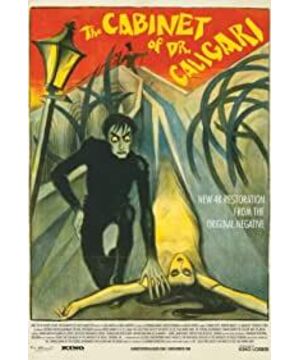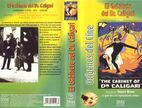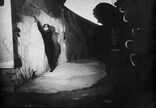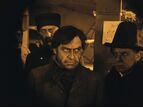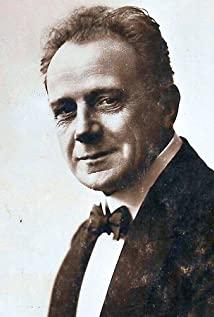1. A layered narrative, the male protagonist's narration is led by a chat between the male protagonist and an old man. In the narration, he describes a man who claims to be a doctor brought a sleepwalker to the town and triggered a series of murders. A friend's fortune-telling killed someone, someone pretended to be a murderer, a sleepwalker attacked the male protagonist's girlfriend, the doctor escaped with a dummy instead, the male protagonist followed the doctor to the mental hospital, and found that he was the dean. While he was sleeping, he was in his diary with someone He found his secret in the book, and the diary sequence is used to describe the ins and outs of the doctor's experiment with the sleepwalker. After talking to the old man, the male protagonist brought the old man to the mental hospital. The sleepwalker and his girlfriend were both there. The male protagonist's behavior proved that he was mentally ill. It turned out that all the previous descriptions were his delusions.
2. The outermost mental delusion wraps the inner mental conspiracy. There is also a diary in the conspiracy that shows how the doctor became crazy. The theme of the three layers is the same: the delusion of human psychology. A series of events that promote the narrative are also all about the true and false of the theme: the true and false of the murderer—> the true and false of the sleepwalker—> the true and false of the doctor’s identity—> the true and false of the male protagonist’s narrative.
Form-space-behavior (movement)-time-state (atmosphere):
1. The setting is also true and false, the drawing board of abstract lines, various unstable oblique structures, consistent with the theme style. I remember that in Akira Kurosawa's "Dream", Van Gogh also used a drawing board to set the scene to express the dream.
2. In this setting space, there are several scenes in which characters walk through the scene to find, and the behaviors and movements of the characters unfold between the empty drawing boards. In some scenes, the scenes are deliberately enriched and the action distance and time are increased, including some single scenes. In the play, the action and expression of the characters are also extended, and the confused and hesitant state of the characters expressed in this form is consistent with the truth and falsehood of the theme (the gloomy and depressing atmosphere). Think of some of Antonioni's [space-character behavior movement-time] processing forms and effects, there are similarities (or inheritance).
3. At 1:05, use the sky wall in the setting screen until the text appears on the screen to express the doctor's mental state.
4. The use of shadows: 26 points
View more about The Cabinet of Dr. Caligari reviews


